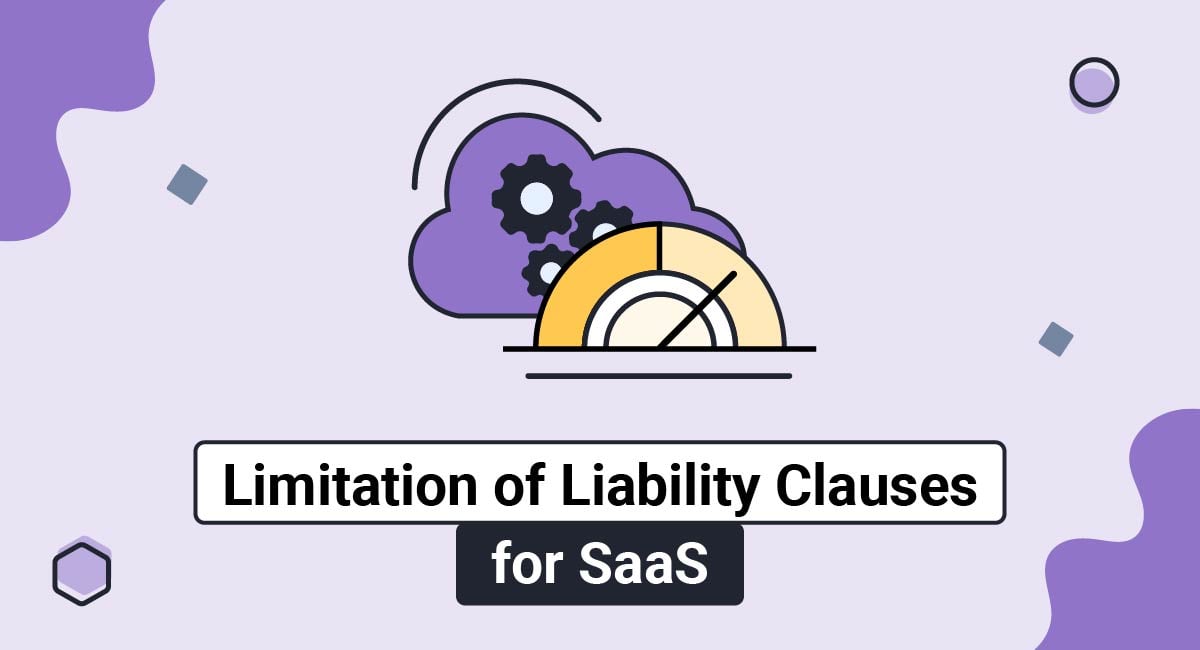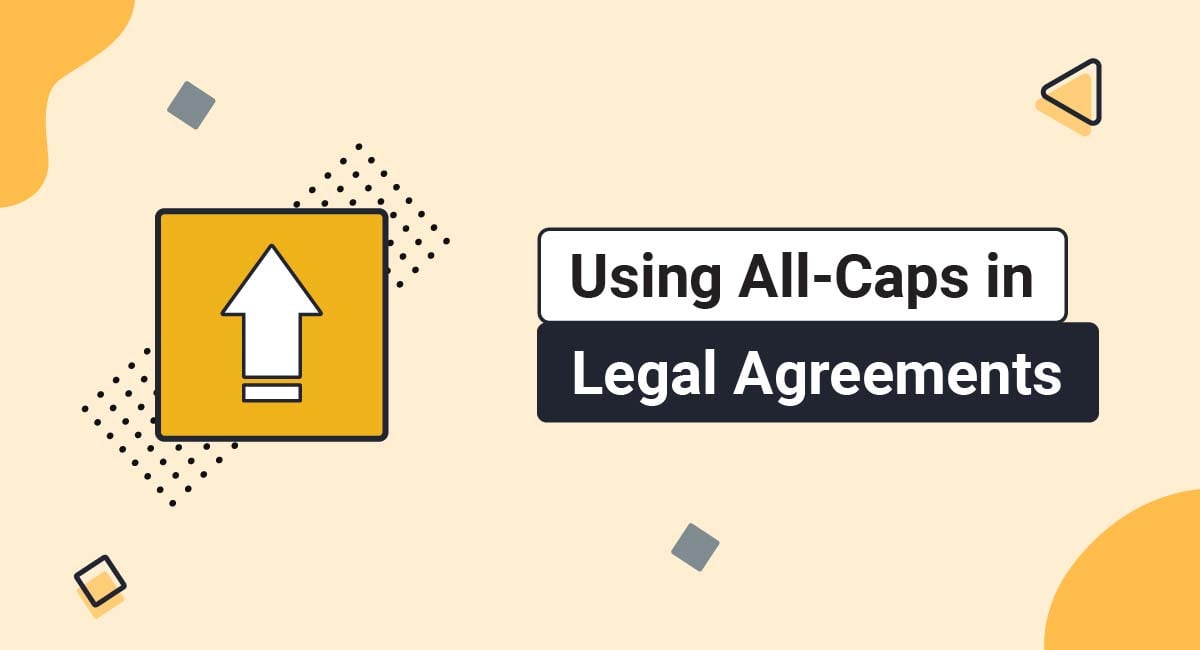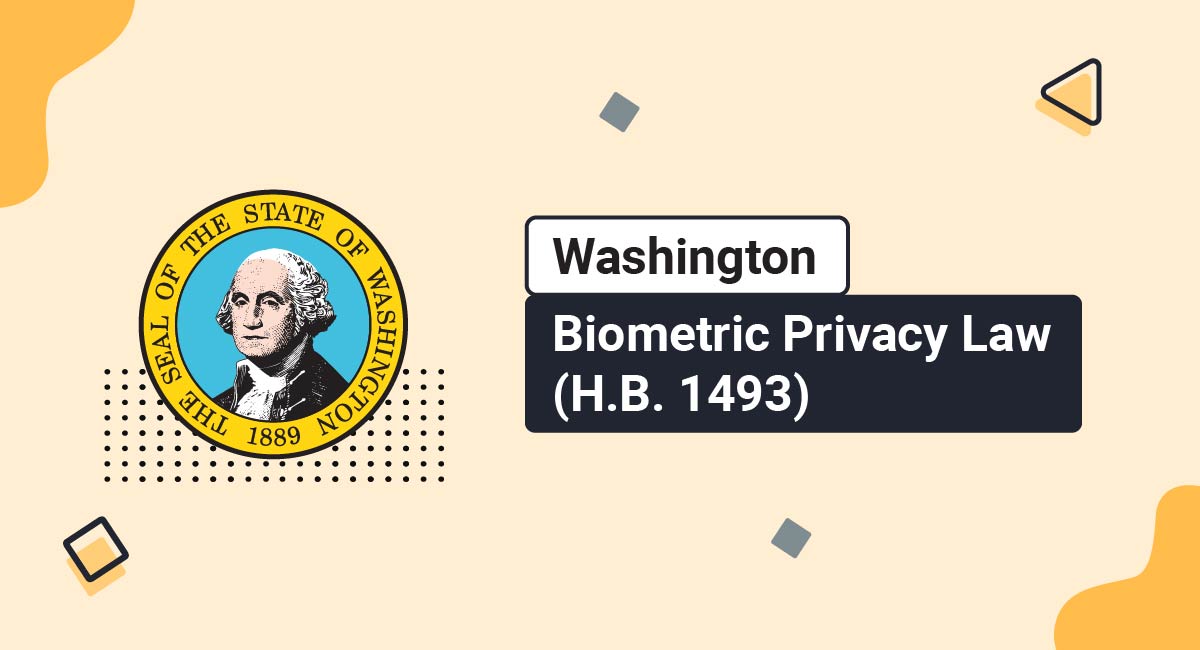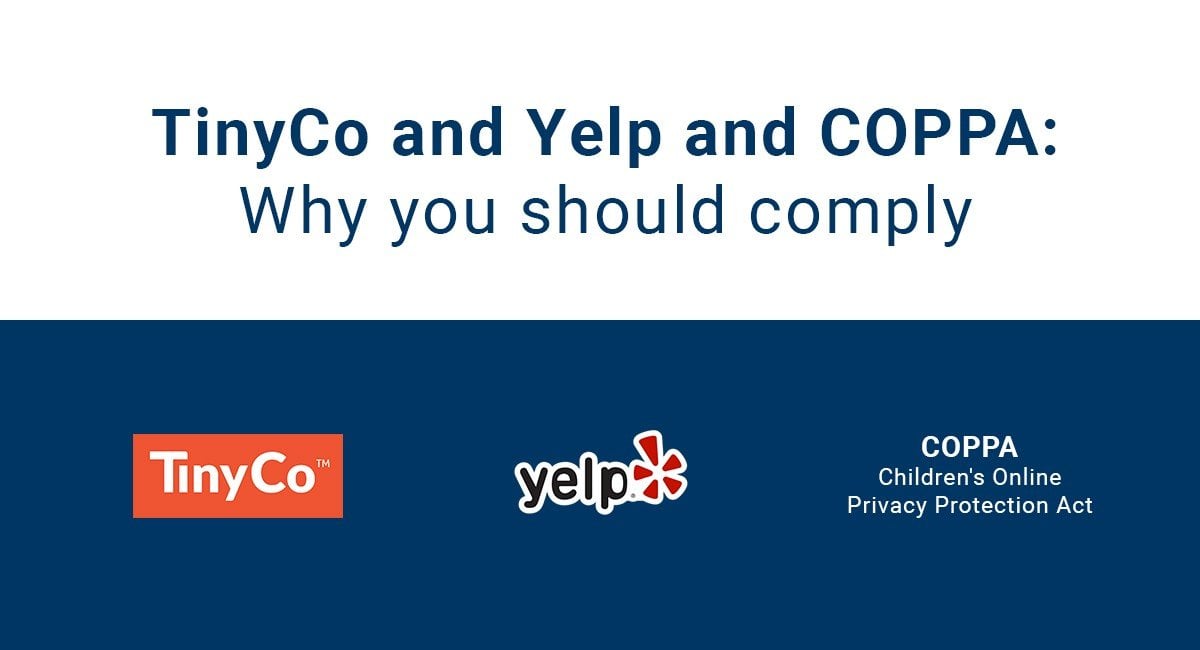A Limitation of Liability clause helps protect your SaaS business from expensive and time-consuming legal issues. It does this by contractually binding a user to being unable to seek certain damages from you.
This article will explain what a Limitation of Liability clause is, why you need one for your SaaS app, and show you how to draft and add this clause to your relevant legal agreements.
TermsFeed is the world's leading generator of legal agreements for websites and apps. With TermsFeed, you can generate:
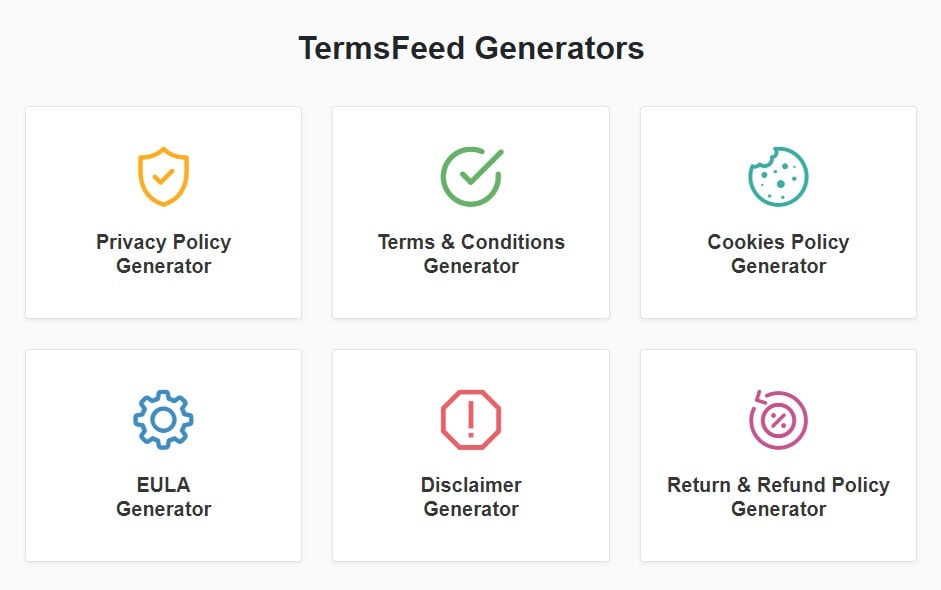
- 1. What is a Limitation of Liability Clause for SaaS?
- 2. Why Do SaaS Companies Need Limitation of Liability Clauses?
- 3. Where Should You Display a Limitation of Liability Clause for SaaS?
- 4. Examples of Limitation of Liability Clauses for SaaS
- 5. What Can You Offer Users Instead of Your Liability?
- 6. Summary
What is a Limitation of Liability Clause for SaaS?
A Limitation of Liability clause enhances your legal protection. Adding one to your agreements gives users fewer grounds to pursue damages against your business.
Limitation of Liability provisions ban particular types of claims or place a cap on the possible amount of money damages awarded to a user. There are provisions that integrate both of these elements.
Here's an example of a broad Limitation of Liability clause in a Terms of Use agreement. It limits damages arising from users experiencing loss of profits, data access or revenue as a result of using its SaaS. This is a direct prohibition which does not include a cap on damages:

Developers choosing a cap on damages usually include the same prohibitions as in the Oracle sample above. They also expand protection because they often have additional concerns.
The following example includes additional precautions to protect the business. It prohibits direct, indirect, incidental, special, punitive or consequential damages, while also providing protection against errors, personal injury, and unauthorized access. In addition, it includes a $100.00 cap on damages not prohibited in the agreement:
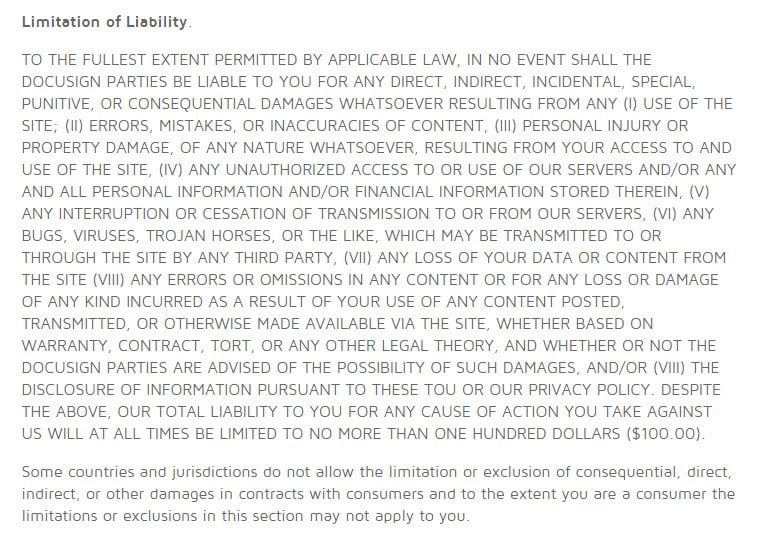
Why Do SaaS Companies Need Limitation of Liability Clauses?
The most common reason for SaaS companies to include a Limitation of Liability clause in their legal agreements is to be protected in the event of a system outage, crash or downtime.
There are times when the app becomes overloaded or a power outage makes it impossible for app services to function. This can lead to downtime that ends up affecting customers negatively, with lost business and functionality.
A Limitation of Liability clause in a Terms & Conditions agreement protects against these situations that are often beyond a developer's control and helps keep them from being held liable for things such as income loss of clients affected by a short downtime.
Another reason is to waive liability connected to data loss.
This does not mean a developer takes no responsibility in maintaining that data and reducing the risk of its disappearance. It's only stating that while you will take all necessary precautions, there are situations where this is beyond your control and if it happens, you do not claim liability.
Where Should You Display a Limitation of Liability Clause for SaaS?
Limitation of Liability provisions can be found in the Terms and Conditions or the End-User License Agreement (EULA) and many SaaS apps maintain both agreements.
As a general best practice, you'll want your Limitation of Liability clauses in the document that contains most of your controlling rules.
Here you can see a Limitation of Liability clause within the table of contents of WhatsApp's Terms agreement:
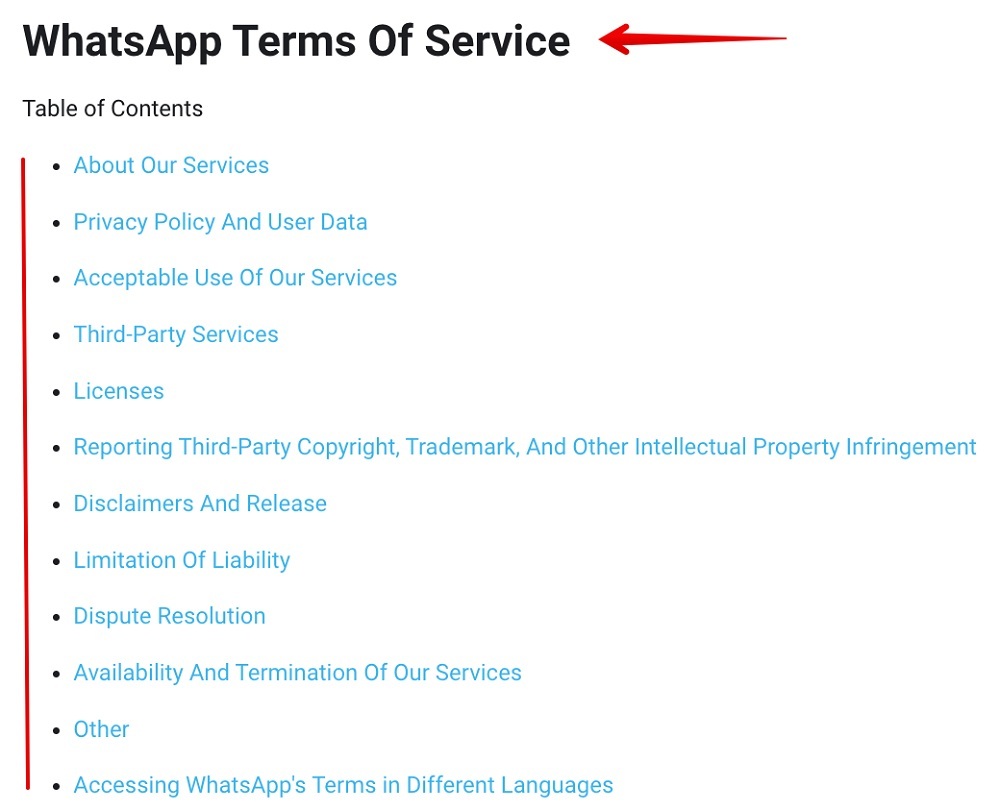
Here's another example, from Etsy's Terms agreement:
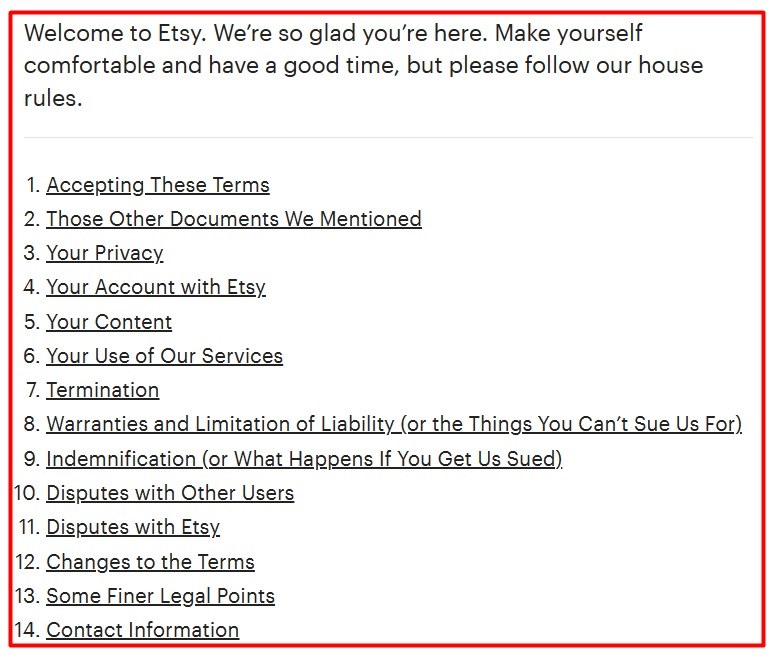
The next example shows this clause as part of an EULA:
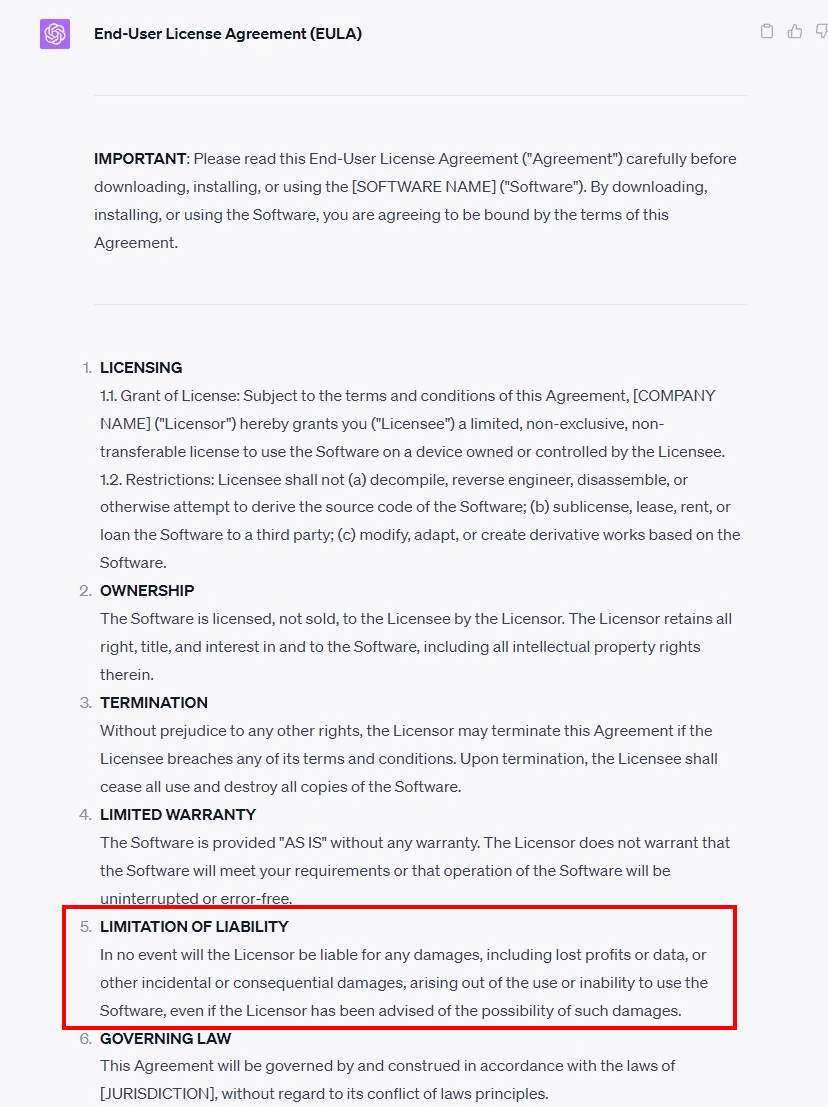
In sum, display your Limitation of Liability agreement within your Terms agreement, and within an EULA if you have one.
Examples of Limitation of Liability Clauses for SaaS
Here's an example of how a business can use this clause to compensate a user, such as with a credit for three months of service or $5.00:

It's also not unusual for a Limitation of Liability clause to include a provision against collecting damages for data breaches, as seen here. Users are alerted that they assume the risk when they provide personal information:
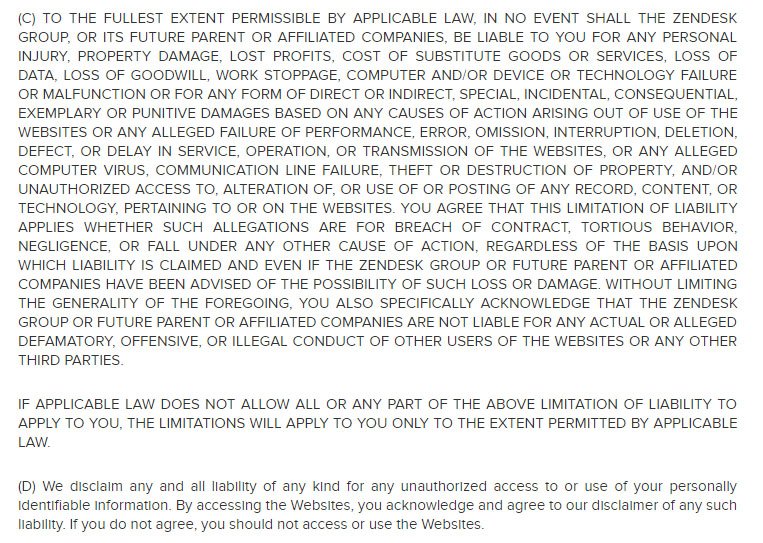
The next example contains nearly all the elements of a Limitation of Liability clause discussed here:
- There are general limits, like punitive and special damages.
- There is also a cap on the damages. Users can collect no more than what they paid for the SaaS.
- There is a limitation in case of a data breach
Here's how it looks:
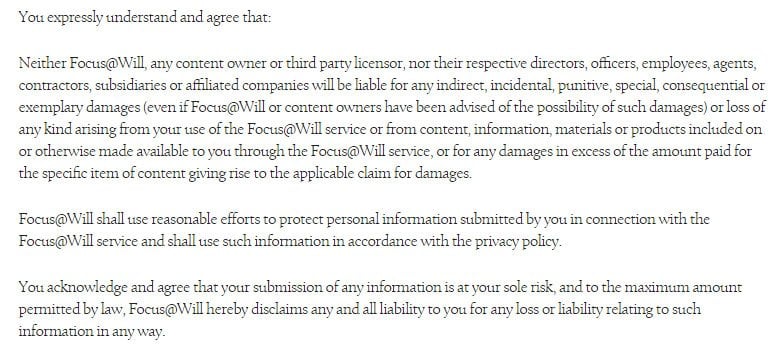
You can be as generous or restrictive with your Limitation of Liability clause as you consider appropriate.
A short Limitation of Liability clause does not necessarily mean a developer is unconcerned. Sometimes they take a restrictive approach where there are no allowable causes of action for damages.
Salesforce takes this approach because it prohibits pretty much any claim for damages, including data loss or computer failure. This embraces the most common purpose of a Limitation of Liability well:

Other developers are not limited to one jurisdiction. While there are places that allow prohibitions limiting liability, others do not allow that.
Your Limitation of Liability clause can note that you are not limiting liability beyond what is legal, as noted in the first line here:
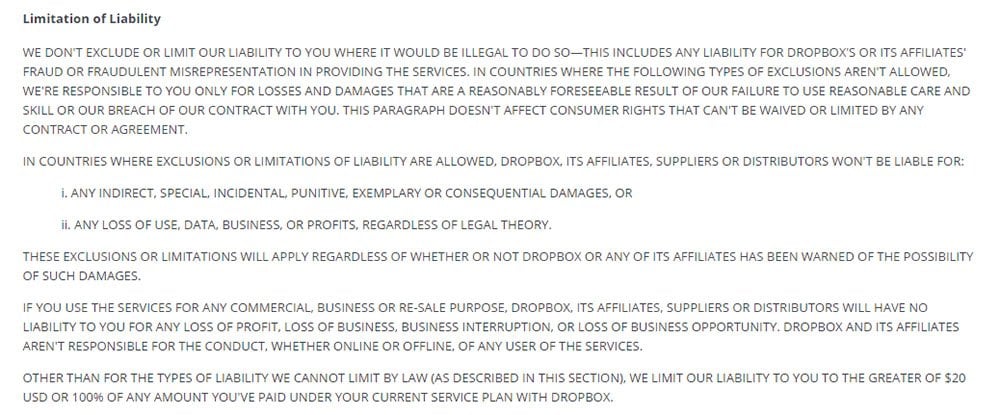
Here's an example of a very standard Limitation of Liability clause that remains broad and references software rather than services:
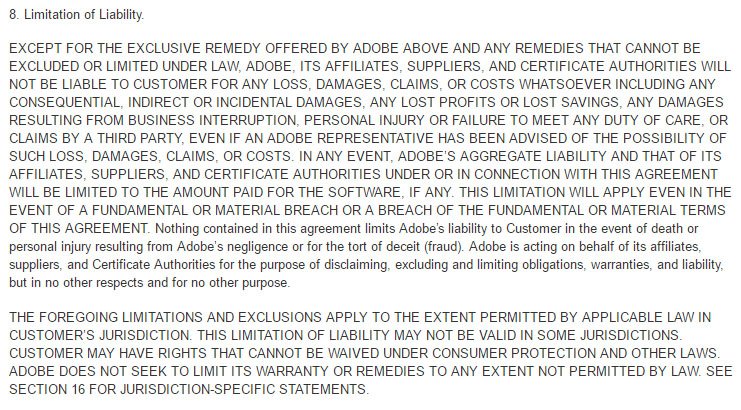
Apple's EULA is designed to cover everything from iTunes music to the most complex apps through its App Store. Much like the previous example, there is a mix of SaaS as well as outright purchases and simple Cloud apps.
Apple's Limitation of Liability clause in its EULA agreement is also broad and also contains a $50.00 damage cap:
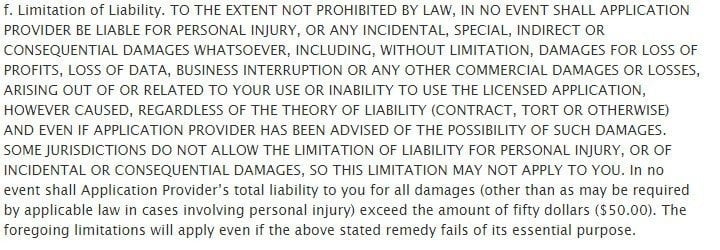
Limitations of Liability clauses are frequently broad and often appear long, but that's not always the case.
The following example clause offers liability protection while keeping the clause short and to the point:

What Can You Offer Users Instead of Your Liability?
There is a fine line between liability protection and failing to take responsibility. Even when a development is beyond your control, it's not unreasonable for a user to request some type of compensation, even if it's not for lost profits or larger losses.
That's why you still need to balance customer service with legal protection.
When you limit your liability, it may mean that your users are left feeling alone to carry a burden of problems that may occur. By offering something else in place of your legal liability, you can help maintain goodwill with your user base.
Here are examples of what you can offer your users even when you waive liability:
-
Subscription credits.
If there's a shutdown or data loss, offering one month free where you do not charge the usual subscription can go a long way.
In serious cases where you charge annually, reduce that amount. This might cost you less than losing users.
-
Trial periods.
A 7 to 30-day trial subscription allows users to try out your SaaS app before they purchase or subscribe.
This way, you do not have refund requests or damage claims arising out of a product that was not appropriate for the user's intentions.
-
Be cautious.
In jurisdictions with comprehensive privacy protection, you may not be able to waive liability for data breaches and other privacy violations.
Also, medical information is strictly protected no matter where you operate.
Adding language that your Limitation of Liability is not enforceable where it illegally protects you from fines and sanctions.
Summary
A Limitation of Liability clause is an essential element of your Terms and Conditions or EULA. This clause will help you avoid having to pay expensive legal fees and spend precious time litigating whenever you experience any downtime or other unfortunate but common happenings.
Write your Limitation of Liability clause to be quite broad and all-encompassing, while making it specific enough to provide clarity.
Note that you are not disclaiming anything that you are legally required to hold liability for, and consider setting a maximum amount of payout that you will be responsible for. You can also offer alternatives to maintain good will even after limiting liability.

Comprehensive compliance starts with a Privacy Policy.
Comply with the law with our agreements, policies, and consent banners. Everything is included.
